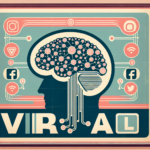An Engaging Encounter with AI-Powered Technologies
Ever wondered how artificial intelligence (AI) is transforming the landscape of modern business? You’re not alone. This pivotal question is at the heart of the digital transformation wave, causing business leaders globally to rethink their strategies and tools. In this article, we’re “Exploring AI-Powered Analytics,” “Investigating AI in Forecasts,” “Exploring AI-Powered Content Creation,” and “Understanding AI-Driven Insights.”
We’re starting by understanding what AI-powered analytics is and how it impacts decision-making by offering insights on customer trends. Then, we’re exploring AI uses in forecasting, revealing how it aids in precisely predicting future trends. We’ll also examine the emerging AI-powered content creation and how it can streamline marketing efforts.
Lastly, we’ll clarify the concept of AI-driven insights and their invaluable role in empowering businesses to act on data-backed decisions. With this melting pot of significant AI concepts, we’re sure you’ll gain a robust understanding of AI and its transformative offerings. So, are you ready to embrace the future?
Exploring AI-Powered Analytics
Definition and Significance
AI-powered analytics utilizes artificial intelligence to enhance data analysis. This advanced technology processes large datasets to extract meaningful insights efficiently. It plays an important role in decision-making by enabling companies to predict trends and understand customer behavior.
How AI-Powered Analytics Works
AI-driven analytics operates using machine learning algorithms and data models. Here’s how it works:
- Data Collection: Aggregates data from various sources like social media, transaction records, and customer databases.
- Data Processing: Cleans and transforms data for analysis, ensuring relevance and accuracy.
- Analysis: Machine learning algorithms analyze patterns, trends, and anomalies.
- Reporting: Presents findings in digestible reports, providing actionable insights.
Applications in Digital Marketing
AI-powered analytics offers numerous applications in digital marketing:
- Customer Segmentation: Identifies distinct customer groups based on behavior and preferences, allowing for targeted marketing efforts.
- Predictive Analytics: Forecasts future trends to optimize marketing strategies and budget allocation.
- Content Optimization: Analyzes performance metrics to improve content delivery and engagement.
- Real-Time Personalization: Tailors marketing messages to individual users in real-time, enhancing user experience.
Benefits of AI-Powered Analytics
The advantages of using AI in analytics include:
| Benefit | Description |
|---|---|
| Efficiency | Reduces time spent on data analysis by automating processes. |
| Accuracy | Minimizes human error and increases precision in insights derived from data. |
| Scalability | Handles large volumes of data, making it suitable for businesses of all sizes. |
| Actionable Insights | Delivers practical recommendations that can be executed immediately. |
Challenges to Consider
While AI-powered analytics offers many benefits, there are challenges:
- Data Privacy: Ensuring customer data is protected and used responsibly.
- Integration: Integrating AI with existing systems can be complex.
- Cost: Implementation can be expensive, especially for small businesses.
Leading Tools and Platforms
Several AI-powered analytics tools can enhance digital marketing efforts:
- Google Analytics 4: Offers predictive insights and advanced data collection capabilities.
- HubSpot: Provides comprehensive analytics for tracking marketing performance.
- IBM’s Watson: Utilizes AI to interpret data trends and generate insights.
To explore further how AI analytics transform business, you can visit this Forbes article.
Investigating AI in Forecasts
AI in Forecasting: An Overview
Artificial Intelligence (AI) plays a pivotal role in forecasting. It handles the prediction of future outcomes based on historical data. By combining advanced algorithms and statistical methodologies, AI generates highly accurate and actionable forecasts.
Techniques for AI-Driven Forecasting
Forecasts derived from AI use diverse techniques. Let’s look at some:
- Time Series Forecasting: Uses historical data to predict future results. It’s highly used in financial forecasting, supply chain planning, and other fields demanding predictive insights.
- Regression Analysis: A statistical method used to estimate relationships among variables. It enables analysts to predict a dependent variable based on an independent variable.
- Neural Networks: A machine learning technique that mimics the human brain to discover complex patterns and relationships often hidden in vast datasets.
Benefits and Potential of AI in Forecasting
AI in forecasting has several benefits and potential applications:
| Benefit | Description |
|---|---|
| Speed | AI systems can analyze large datasets at a speed significantly higher than humans. |
| Accuracy | Utilizing machine learning algorithms and statistical methodologies, AI produces precise forecasts. |
| Predictive Power | AI models can predict future outcomes and trends, empowering businesses to plan strategically. |
| Adaptive Learning | Continuous learning enables AI models to improve accuracy over time as they receive more data. |
Challenges & Limitations
Despite the potential, there are challenges when it comes to using AI in forecasting:
- Data Quality: Reliable forecasting requires high-quality, consistent data. Inaccurate or incomplete data can negatively impact forecast accuracy.
- Computational Power: Processing large volumes of data requires substantial computational power and infrastructure.
- Expertise: Developing, optimizing, and interpreting AI forecasts require a certain level of technical expertise.
Real-world Applications
AI-powered forecasting has a multitude of practical applications:
- Weather Forecasting: AI methods are increasingly used to predict weather events with higher accuracy.
- Financial Forecasting: AI can predict stock market trends and economic shifts, assisting investment decisions.
- Supply Chain Management: AI can forecast demand trends to optimize inventory and logistics.
- Healthcare: AI aids in forecasting disease outbreaks and patient outcomes, improving decisions about preventives and treatments.
For a detailed look at how AI is changing forecasting, consider this IBM article.
Exploring AI-Powered Content Creation
Defining AI-Powered Content
AI-powered content refers to the use of artificial intelligence technologies in creating and optimizing content. This approach leverages tools like natural language processing (NLP) and machine learning to generate written content, design visuals, or even produce audio and video materials. AI can assist in creating blog posts, marketing materials, product descriptions, and more, while also suggesting improvements for existing content to enhance engagement and SEO performance.
How AI-Powered Content Works
The process involves several stages:
- Content Input: Users provide initial information or keywords for which the content needs to be created.
- Content Generation: AI algorithms analyze the input and generate text, images, or other forms of content. Tools like GPT-3 are a good example of this capability in producing human-like text.
- Content Optimization: AI tools suggest titles, headings, keywords, and other elements to improve SEO and readability.
- Performance Analysis: Evaluates how the content performs in terms of engagement and reach, providing insights for future content strategies.
Applications of AI-Powered Content in Different Sectors
AI-powered content has been employed in various sectors with distinct applications:
- Digital Marketing: Creates personalized advertising content and automates social media posts.
- E-commerce: Generates product descriptions and reviews to enhance customer experience.
- Media and Publishing: Assists in news article writing and content curation based on trending topics.
- Education: Produces educational materials and personalized learning content for students.
Benefits of AI-Powered Content Creation
Utilizing AI for content creation offers several advantages:
| Benefit | Description |
|---|---|
| Efficiency | Accelerates content production processes, allowing creators to output more material in less time. |
| Consistency | Ensures uniformity in tone and style across various pieces of content. |
| Cost-Effective | Reduces expenses associated with hiring multiple content creators. |
| SEO Enhancement | Enhances content optimization for search engines, improving visibility and reach. |
Challenges of Implementing AI-Powered Content
While beneficial, AI-powered content also presents challenges:
- Quality Control: Ensuring that AI-generated content maintains human-level quality and relevancy.
- Authenticity: Balancing AI efficiency with the need for authentic, creative input from human writers.
- Bias and Sensitivity: AI tools may inadvertently produce biased content, requiring human oversight to ensure responsible standards.
Popular AI Tools for Content Creation
Several AI-powered tools are leading the way in content innovation:
- Jasper: Assists in generating creative content swiftly and efficiently.
- SurferSEO: Optimizes content through data-driven insights for enhanced SEO performance.
- Lumen5: Converts text content into engaging videos through AI technology.
For further insights, the Forbes article on AI-powered content provides a deeper exploration of its perks and challenges.
Understanding AI-Driven Insights
What are AI-Driven Insights?
AI-driven insights refer to the actionable knowledge that artificial intelligence extracts from data. These insights help businesses make informed decisions by revealing underlying patterns, trends, and relationships in data that may not be noticeable immediately. Utilizing machine learning and advanced algorithms, AI-driven insights go beyond standard analytics by providing predictive and prescriptive guidance.
Core Features of AI-Driven Insights
A few notable features of AI-driven insights include:
- Predictive Capabilities: AI systems forecast future events and behaviors based on current and historical data.
- Real-Time Analysis: AI processes data at high speeds, allowing quick response to new data inputs and facilitating agile decision-making.
- Automated Pattern Recognition: The technology autonomously identifies trends and anomalies within vast datasets without manual intervention.
- Customizable Outputs: Tailors outputs as visual dashboards, reports, or alerts to suit specific business needs.
Leveraging Business Intelligence with AI
Integrating AI with business intelligence (BI) takes traditional BI tools to the next level by infusing automation and machine learning, which enhances data accuracy and insights depth. Here’s how businesses can leverage these capabilities:
- Enhanced Data Visualization: AI-driven BI tools automatically create visually engaging graphs and charts that encapsulate complex data relationships.
- Continuous Improvement: AI learns over time, continuously refining its models and insights for more precise and relevant analysis.
- Cross-Functional Alignment: Provides a unified view of business data across departments, facilitating strategic alignment and collaboration.
Real-World Examples of AI-Driven Insights
Real-world applications demonstrate the transformative power of AI-driven insights:
- Retail: AI insights enhance customer experience by predicting purchasing behaviors and personalizing product recommendations.
- Healthcare: Supports clinicians in identifying disease trends and patient outcomes, improving diagnostic accuracy and treatment efficacy.
- Finance: AI insights in banking and financial services identify fraudulent activities and advise on investment strategies based on market patterns.
To learn more about the impact of AI-driven insights on business transformation, visit this article from Harvard Business Review.
Conclusion
By drawing from various sectors such as data analytics, forecasting, content creation, and insight, the article has shed light on the escalating importance of Artificial Intelligence (AI). AI, with its advanced algorithms and machine learning capabilities, has proven to be an invaluable asset for businesses worldwide. It has set a new stance in data analysis, producing rapid, accurate, and actionable insights, diversifying application in digital marketing, and streamlining content creation processes.
AI has also exhibited remarkable prowess in forecasting, thereby assisting businesses in strategic planning. However, it is equally important to be aware of the challenges such as data privacy, integration complexities, data quality, computational power requirements, and content authenticity. Balancing these concerns, leveraging the AI tools with caution and precision can deliver promising results across various sectors.
Frequently Asked Questions – FAQs
What is the role of Artificial Intelligence in data analytics?
Artificial Intelligence (AI) enhances data analytics by automating the process of analyzing large datasets and extracting meaningful insights efficiently. This in turn facilitates better decision-making for businesses.
How does AI contribute to content creation?
AI aids in content creation by generating written content, designing visuals, and improving existing content. It accelerates production processes, ensures consistent tone and style, and enhances SEO performance.
What are some challenges of implementing AI?
While AI offers many benefits, it also poses challenges such as safeguarding data privacy, integrating AI with existing systems, ensuring content authenticity, managing computational power requirements, and maintaining high-quality data.
What are some applications of AI-powered analytics in digital marketing?
AI-powered analytics finds multiple applications in digital marketing, including customer segmentation for targeted marketing, forecasting future trends to optimize strategies, enhancing content delivery, and tailoring marketing messages in real time for an improved user experience.
What is the role of AI in forecasting?
AI plays a key role in forecasting by predicting future occurrences based on historical data. It combines advanced algorithms and statistical methodologies to generate highly accurate forecasts useful for various fields like finance, supply chain planning, and healthcare.






